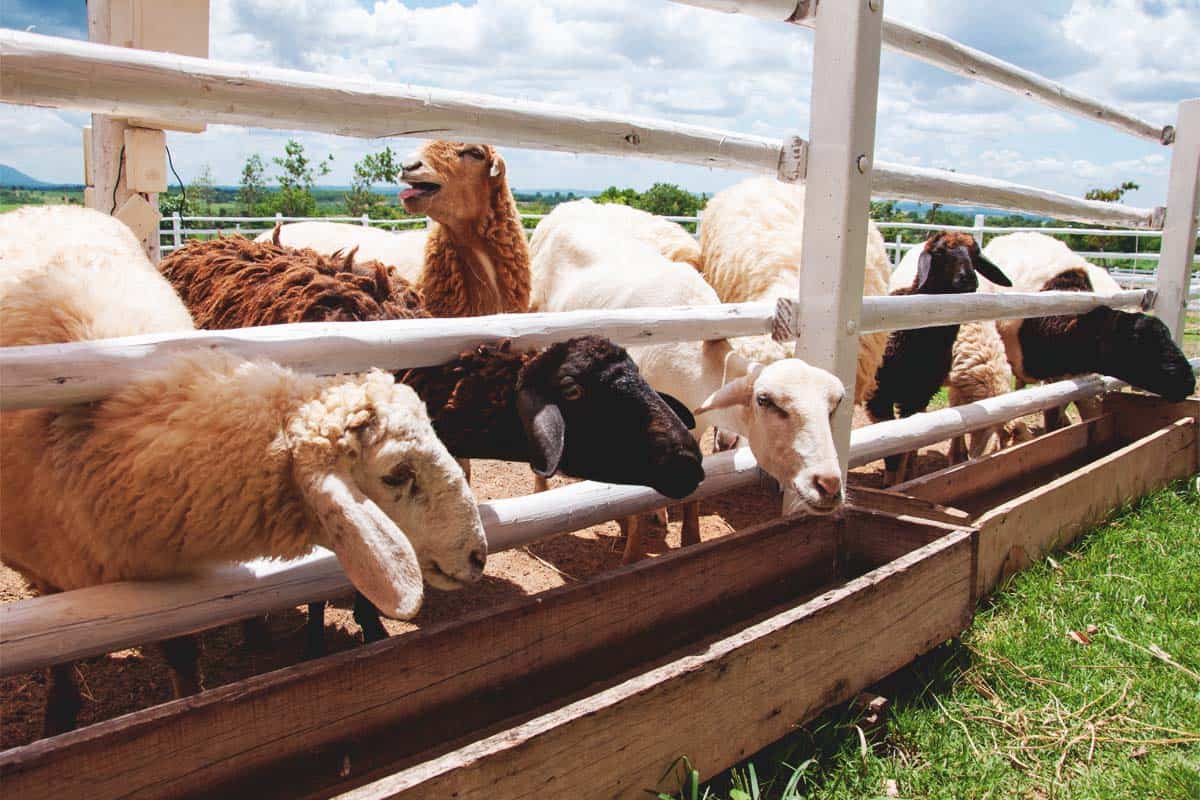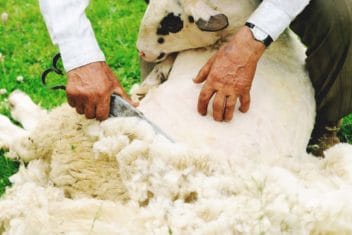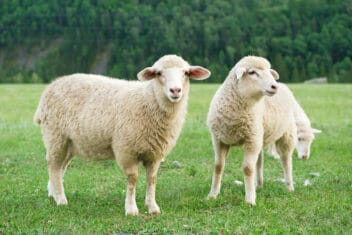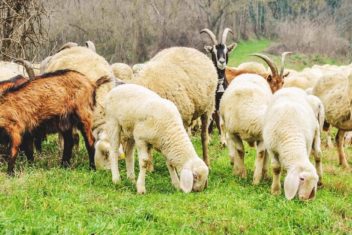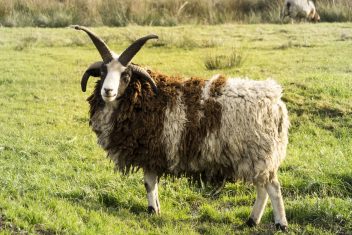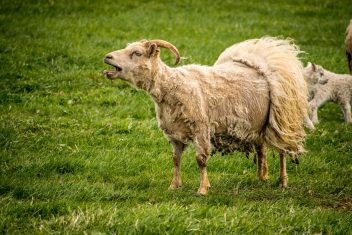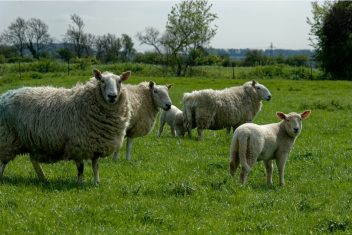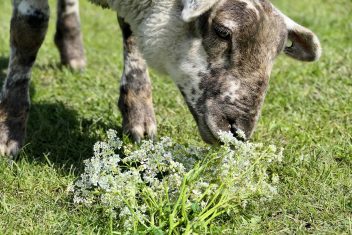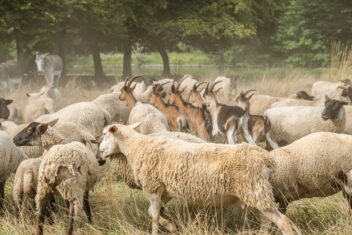Many people decide to raise sheep with the utopian thought they will be productive, low-cost members of the farm.
While this is fairly true, it’s only true to a certain extent. A flock of sheep can turn into a serious money pit if you’re not careful!
You don’t have to pinch pennies or eschew important expenses that are necessary for the health and well-being of your sheep. You can easily cut costs while raising sheep by being an attentive, thoughtful shepherd.
Whether you are hoping to raise sheep for profit or you simply want to quit spending so much money on their care and upkeep each year, here are a few cost-cutting tips to save money while raising sheep.
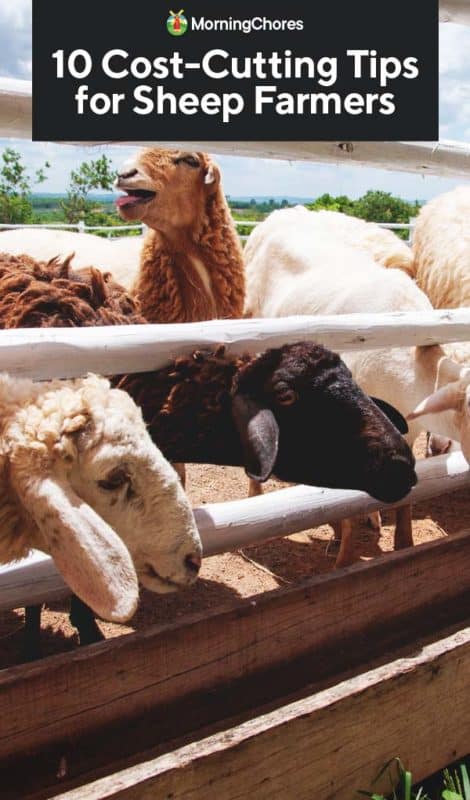
The Average Cost of Raising Sheep
When you first get started raising sheep, it can be difficult to determine how to budget appropriately for each animal.
There are various costs that go into raising sheep. While this varies depending on breed, location, and other factors, you can expect the following expenses:
1. Buying Livestock
Before you can start raising sheep, you need to get them to your farm. The cost of sheep varies quite a bit depending on where you live, how many people around you raise sheep, and what breed you want to raise.
We usually pay around $100 per animal, because we purchase only Icelandic sheep (which are not common where we live). You might pay less or more.
Once you get a breeding population established, though, you won’t have to pay for individual animals. This is really a one-time expense. You’ll just have to pay the regular expenses associated with maintaining your breeding rams and ewes throughout the rest of the year.
2. Facilities
If you already have fences and barns built to accommodate your sheep, you’re in luck! You can cross this expense off the list. However, the reality is that most people don’t. You will need to account for expenses like fencing, housing, and loading chutes. We raise our sheep in the same housing as our chickens. We can offset some of those expenses with the money we make from selling eggs.
But when it’s time to put our sheep out on pasture, that’s a different story. In order to maintain multiple paddocks for rotational grazing, we need several different fenced-in areas along with gates and loading chutes. We usually budget no less than $2000 for each new paddock we build. Your costs could be less or more depending on your existing infrastructure.
3. Fodder
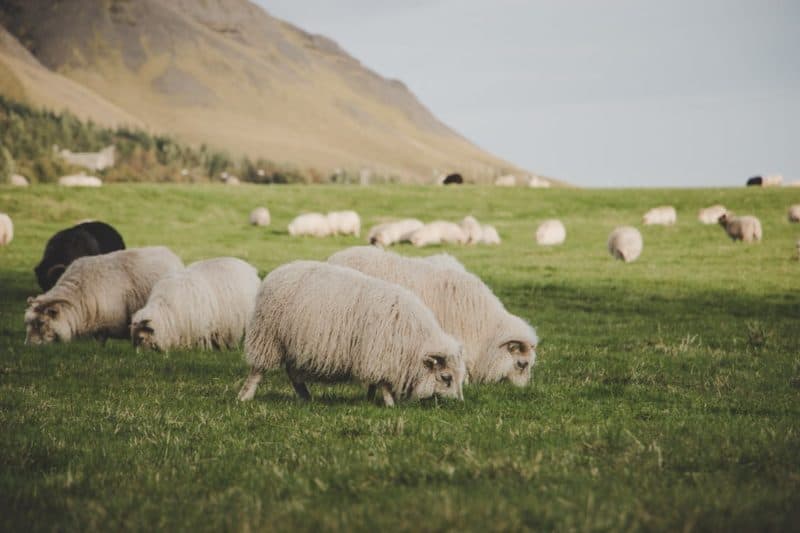
Most sheep do not need to be fed any grain and can instead (if you have space and facilities) be raised on pasture. If you live in an area that experiences freezes during the winter, you will also need to factor in costs for hay.
Plan carefully though, running out of hay mid-winter can blow the hay budget, and we discuss this in our post on how to find hay in winter. We budget about $106 per sheep, per year, between hay and mineral supplements.
This is based on hay that costs anywhere between $35 and $45 for a round bale (depending on whether it is first or second cut). Your hay costs will vary, too. Remember that it will always be cheaper to buy round bales versus square bales – you just need to have the equipment on the farm to unload them.
4. Maintenance Expenses
This category varies widely. You will want to include things like shearing fees, dewormers, hoof trimming services, and other equipment in your budget. I only factor in about $20 per sheep per year in this category. We are lucky enough to only pay a few dollars per animal for shearing and rarely need to deworm due to good pasture management practices. Hoof trimming on your own – which I’ll talk about later – can also save some money.
However, keep in mind that the cost of maintaining a flock of sheep could cost anywhere between $10 and $100 per animal. You’ll need to account for everything from basic preventive healthcare to veterinarian visits to lambing assistance.
5. Trucking and Transportation
We raise sheep for meat on my farm. Therefore, for each animal, we also need to calculate in the cost of trucking them to a USDA-inspected slaughterhouse and having them processed for our customers.
We estimate around $175 per sheep each year for this expense. You may not have to pay this if you process your animals USDA-exempt on your farm. The same applies if you don’t plan on raising sheep for meat production.
Remember, the larger the flock you have, the higher your expenses will be. However, each individual sheep will cost you less money per head. Many costs can be defrayed among multiple animals, so if you’re looking to really make some money with sheep, the most obvious way to do so is to raise a larger flock of sheep.
Cost-Cutting Tips on the Sheep Farm
1. Interact With Your Flock
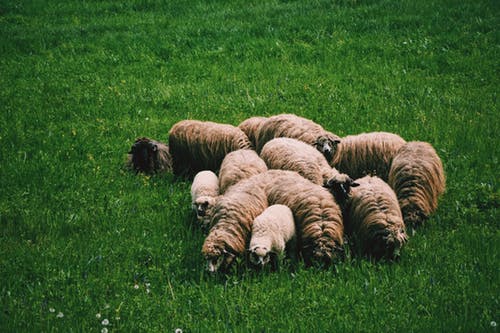
The easiest way to cut costs while raising sheep? Pay attention! Spend a few minutes each day (ideally, at both feeding and non-feeding times) inspecting your flock. You’ll be able to detect any odd behaviors or symptoms of disease before they become serious (and expensive) problems.
It’s good to work with your flock at several times throughout the day. This is because sheep have natural behaviors that can vary depending on the hour. A sheep that’s lying down in the late afternoon might not be cause for alarm. However, a sheep that is consistently on the ground and not eating at all may have a serious problem.
In general, watch out for animals who are isolating themselves or spending too much time on the ground. A sheep that refuses to eat for more than a day requires immediate veterinary attention.
This might sound just like good sheep husbandry, but it’s also an important cost-cutting tip. If you let a sheep become sickened to the point where it needs expensive veterinary attention – or if that sheep eventually succumbs to its illness – you’re going to be out a lot of money.
2. Become Educated
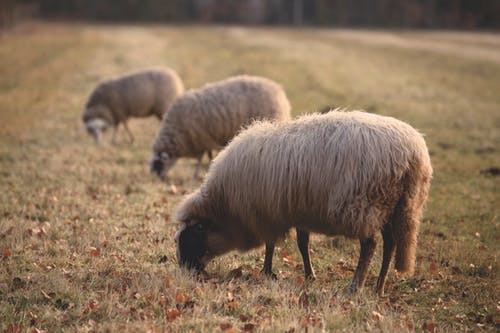
While some wisdom can only be gained from experience, do your best to glean as much information as possible about raising sheep. If anybody in your local area raises sheep, try to connect with them to learn more about how they work their magic.
Read as many books as possible, attend workshops, or at the very least, read as many articles as possible. Knowing everything there is to know about sheep is an excellent way to save money. You’ll learn the many ways to do things without spending a fortune.
3. Keep Your Animals Outside
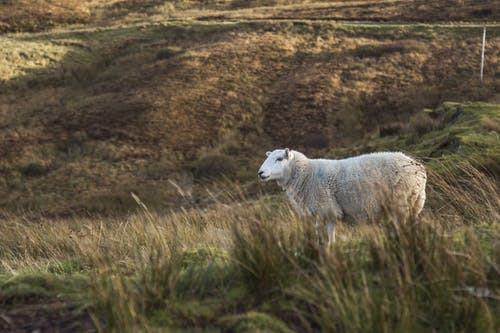
This is a good rule to follow when raising any kind of livestock. Animals do best when they are kept outside. They simply aren’t designed to live their entire lives in confinement. You will have fewer worries about disease, (which is incredibly expensive to treat) and you will spend less on feed. Plus, there will be less bedding to purchase and less manure to haul out.
While you’re at it, get them on good pasture. Again, you’ll reduce feed costs and also reduce the expense of dewormers if you can rotate them regularly.
Some shepherds don’t have to deworm their sheep at all because they are constantly grazing new pastures. When you realize that dewormers like Ivermectin or Prohibit cost $20 or more per bottle, that’s a huge cost-saving and an important cost-cutting tip.
4. Consider Supplemental Feed
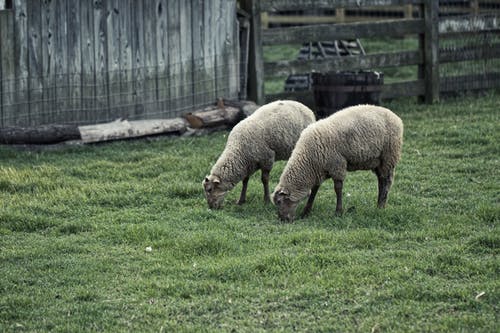
Not enough pasture to graze your sheep effectively? Why not rent some? If you live in a rural area – which, in all likelihood, you do, if you’re raising sheep – there’s a good chance that some of your neighbors aren’t using all of their land.
Tell people you want to graze sheep, and you can often graze your flock for free on their property. After all, your neighbors won’t have to mow. Plus, sheep are some of the best grazers to have around, as they produce minimal odors.
Remember that not all sheep require perfectly maintained pasture, either. There are plenty of sheep breeds – like Icelandics – who have digestive systems similar to goats. Not only will they happily munch on grasses and forbs, but they’ll also enjoy eating brush too – now that is a great cost-cutting tip.
Keep an eye open for our post where we discuss the advantage of renting out goats to eat brush as fire breaks, or to maintain overgrown areas. Icelandic sheep can easily fill the same role, and earn some ching on the side.
Don’t forget mineral supplements either. You will need to use minerals specifically for sheep to avoid deficiency or toxicity problems. Both of these issues can not only be expensive, but devastating.
5. Supply Plenty of Water
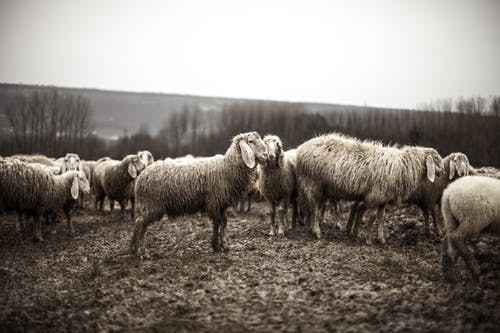
Just as humans need to stay perfectly hydrated in order to be healthy, so too, do sheep. Keep plenty of fresh, clean water on hand for your sheep. You’ll notice that they have fewer issues with heat exhaustion and dehydration. These can be expensive to treat and water, in most cases, is free or cheap.
Make sure you keep water ice-free and shaded during the harshest times of the year.
6. DIY as Much as Possible
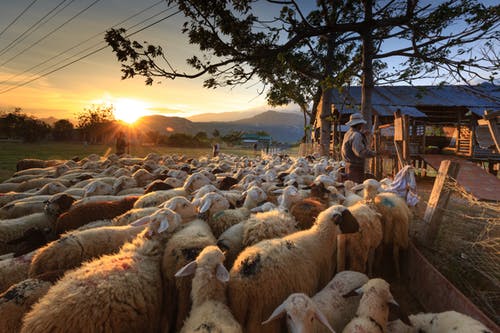
There are some sheep management tasks, like shearing and lambing assistance, that might take some practice to get the hang of. It’s worth seeking a professional’s help if you really aren’t sure how to do something – or if you aren’t comfortable doing it. However, our cost-cutting tip is that it pays to learn how to do things yourself.
Some tasks, like giving shots, administering dewormers, or trimming hooves, are easy to learn just by watching a few videos. Others may take more practice. However, it’s worth educating yourself to save money.
Similarly, you can often DIY your facilities, too. Use old materials, like discarded doors, for windbreaks, or pallets as temporary fencing. Sheep aren’t that crafty (although some will try your patience!) so you don’t need double- or triple-reinforced fencing systems like you might with animals like goats.
Just remember that you don’t have to run out to the farm supply store every time you need an item on the farm. Often, with a bit of creativity, you can repurpose other materials to suit new needs.
7. Shop Around for a Vet
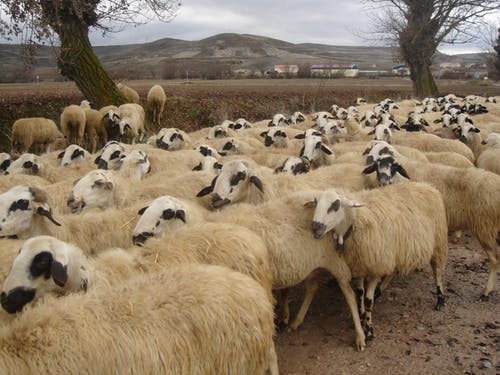
Unfortunately, not all veterinarians are trained in working with sheep. You might only have one vet in your area with the expertise necessary to help your sheep. In that case, you have to pay what you have to pay. However, if there are multiple, do your research and don’t always hire the first one you find.
8. Explore New Markets

Even if you’re not raising sheep for profit, looking for ways to make a bit of money can offset some of the expenses of your sheep-raising passion. For example, I raise sheep primarily for meat on my farm. We do not raise them for fiber.
However, they still need to be sheared twice a year – and that costs money. Therefore, we sell the wool just to get money back and recoup some of our costs.
There are all kinds of ways you can make money with sheep, from selling lambs to 4H exhibitors to butchering and selling Easter lambs. Just be open to new prospects, even if you only want to raise sheep for your own sustenance.
9. Consider the Breed

Now this is a vital cost-cutting tip, as it can doom your endeavor or ensure you have success. Think very carefully about the breed of sheep you are raising, as many are best suited to specific climates. If you live in a warm area, a Barbados Black Belly sheep might be a good choice. However, if you live in a colder area, you’ll want a sheep that puts on a dense, thick coat of wool.
You should also think about the management aspect of certain breeds. Some are known to produce twins or triplets. This can maximize your profits and reduce your expenses when it comes to selling off or butchering excess animals.
However, there are some sheep breeds who regularly birth triplets – but aren’t good mothers when it comes to that many babies. This can cause you to lose money instead.
Again, do your research, and invest in the best possible breed for your needs and location.
10. Keep Only the Best
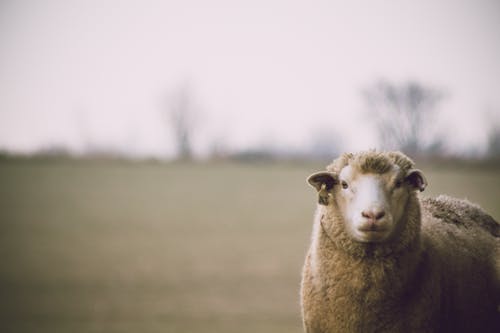
It might break your heart to have to get rid of an ewe here or there. Remember, though, that it can cost a lot of money to keep around a sheep who is not earning his or her keep. If you have any sheep that can’t breed, lamb poorly, are poor mothers or do not grow well, cull them.
Either sell them to another farm (be sure to disclose these issues when you do sell, however) or send them to the slaughterhouse.
It may sound inhumane, but when it comes to saving money raising sheep, you need to think carefully about whether those added expenses are worth having around. Our cost-cutting tip: think with your head and not your heart.
Be Patient to See These Cost-Cutting Tips Bear Fruit

You won’t save money instantly when you start raising sheep. If you’re new to the game, you need to remember that there are expenses that you will need to pay upfront in order to get started. For example, you’ll have expenses like infrastructure and flock purchasing costs.
However, once you’ve spent a few years raising sheep and have a good idea of what expenses go into keeping a successful flock, you’ll be able to recoup many – if not all – of your original costs. Just be patient, and be creative. There are always new options out there to help you make (but especially save) money with your sheep!
